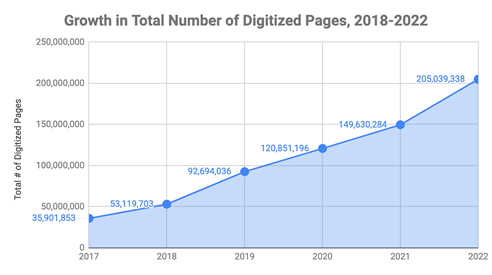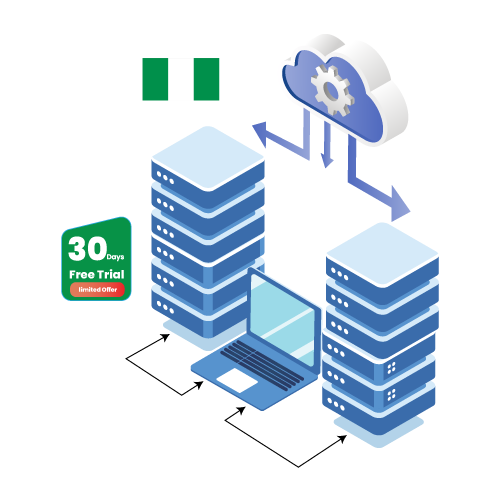#Best physics scale model company
Explore tagged Tumblr posts
Text
Life Was Easy When It Was Boring - Gwayne H. x Targaryen!Reader

A/N: Hello I said I wasn’t writing but I did anyways bc @wicked-barbie inspired me now back to reposting on ao3, also the title is song lyrics from the police - darkness
Rating: Explicit
WC: 2.4k
Tags: PWP, 80’s corporate vacay, ARUBA!, I do get in the weeds about the au, Rhaenyra’s sister!Reader, Aemma lives, background Rhaenicent, bisexual Gwayne, I physically cannot go without mentioning Criston, dirty talk, oral m!receiving, f!masturbation, Otto argues w daemon while reading fiscal reports by the pool, Gwayne’s mannerisms are so very important to me

The soft din of breakfast being served drew you out of your thoughts. You scanned the room, seeing your sickly father— your mother rubbing his shoulders, a furrow between her brows. You were nineteen, Rhaenyra twenty-two, and set to inherit the family company. Aemma couldn’t have children anymore and now your father had cancer. Things needed to be tidied up considering her gender. Idiotic but whatever, she was intelligent and driven, you idolized your sister.
She was being courted around by the Velaryon shipping heir— you had a feeling she’d found a loophole. Your sister in a sarong, Alicent on her arm passed by, heading down to the pool to have breakfast, sparing no glance your way. You’d noticed Laenor certainly spent more time looking at men himself. A match was a match.
It was summer in the Northern Hemisphere. When the annual holiday to some destination most people couldn’t afford occurred. A neat bow for a two-week chance of expanding business. You went along for the ride, as was your duty.
This year it was Aruba. The Hotel Americana, sitting on lovely Palm Beach. You’d read about it in the Times. ‘Those who wish for familiar hotels with many resort amenities, nightlife, shopping, and gambling will like the scale and variety available.’
Hm. You had a feeling Otto was steering your father towards the economic boom of the United States right now. You went to University in Chicago, grateful for the warm weather. You were a bit shy and awkward, used to pubs and not clubs. Regardless, you liked the spa, courts, and the beach even if you looked like a ghost with that zinc-laden sunscreen your mother ‘offered’.
Not everyone had arrived yet. Uncle Daemon was to join with Laena, scandalously young, but she was strong and mature. Much like the women were in your family. You forked some eggs into your mouth, frowning. Laena calmed him, but he was certainly…chaotic. Daemon and Otto’s arguments were highly entertaining at the least.
Alicent was excited her brother was coming.
Gwayne Hightower was the enigmatic heir, a wildcard by all accounts, but he kept family ties. As a Targaryen looking in, it was expected of him to be ingratiated into the international conglomerate. Alicent was best friends with your sister, she knew all of you and held you as a baby.
The younger brothers who weren’t shucked off overseas in boarding school had their divisions to run and oversee. Where a Targaryen loomed, a Hightower stood in the shadow, pulling the strings, combing the pieces. Except Gwayne. He took off and moved to the States, you’d seen him in magazines.
“A male model, pah! He’s running from his birthright, he’ll learn once he arrives,” you heard Otto scoff to your father over breakfast, tossing a magazine out of his sight. You fiddled with your food, purple eyes peering out the large windows, scanning the bay.
You wondered if Otto held some hope for him. Alicent seemed to be doing just fine in his stead. Yet the idea of Rhaenyra becoming CEO ruffled feathers. Women in business…you certainly didn’t want it.
You thought about Gwayne again. He was handsome. Haughty, yet smiley with who he liked, a gleam in his eye like he held a secret, pretty teeth, and fine features. You were such an ugly duckling the last time you saw him. Baby fat, braces, pigtails. Horrid.
“You must be the other one,” he had laughed at some corporate dinner, earning some giggles and smiles. You smiled until you were alone and cried, watching your sister gleam, a shining star you wished to be.
The other one.
Perhaps you weren't too keen to see him again. Probably would bring a fellow model to strut around the beach with. Probably had a dumb smirk on his face, just like Criston used to. Probably would take a look at you and scoff about growing up and filling out.
You realized you were white-knuckling your utensil and carefully released your grip. You sighed, standing up to get dressed for the day, nodding at your parents.
It was always a flurry of neurotic dressing, comparing yourself to the willowy frame of Alicent and the athletic build of Nyra. Your therapist told you to dress how you wanted, not what you thought people expected. It was the age of athletic, leggy bodies— and you qualified for what felt like neither. Even if you played good field hockey back in school.
It’s not as if you were turned down often, but a bad relationship or harsh word left you insecure now and then.
“Curves, curves are pretty,” you muttered, tying on the top, a neon string bikini— one you'd bought on a whim shopping with your sister before the trip. The bottoms were cut high too, so you wrapped up in a big fishing shirt and slithered downstairs to hit the beach, a towel in one arm, a bag slung off your shoulder.
You walked out of the elevator, a clipped and haughty voice interrupting. They called, “Rhaenyra?”
You frowned. Not Rhaenyra. You turned to see the offender, lips set in a pout. Shock morphed your face. Gwayne Hightower, dressed in designer, his reddish hair all slicked and handsome, smug as you remembered. You blanched, blinking. Recognition flit over his blue eyes— a Cheshire smile upon his lips.
“Oh my, all grown up aren't you?”
He grinned, moving, holding you up as you tried to pass with a polite smile.
“Don’t you want to help a dear Hightower out?” He teased, followed by scoffing laughter. His bright eyes nonchalantly flicked to your face, then down to your tits and back. You would be lying if it didn’t feel good. You wanted him to look at you like that deep down.
What did you want?
You are supposed to be pissed off.
“I’m sure Otto has a whole itinerary for you, Gwayne,” you said coolly.
He shrugged, smiling to hide irritation, “I’m sure he does. I’ll see you on the beach, such a swan now aren’t you, no?”
You scowled, turning on your foot. He remembered the comment, the bastard had read your mind about the ugly duckling. You’d relax by the water and try to forget about his smug face, sharp cheeks, gorgeous blue eyes, and dark lashes- no!
“Fuck!��� You hissed, scaring some old couple, ducking your head under your hat.

You’d been dozing under an umbrella, startled as the familiar voice of Gwayne disrupted your peace. He looked annoyed, a dismal look in his eye. The way his mouth pulled down reminded you of Otto and Alicent. You pushed back your hat, looking over at Gwayne lighting a cigarette in the adjacent lounger.
“Hello to you too, I take it you had a warm welcome?”
He scoffed, shrugging, “Oh, it’s always warm when Otto Hightower is in the room. Of course not, he wants me in the business, I want to live my life.” He exhaled a cloud of smoke, staring at the sand.
You mulled over his words, replying, “You could step down.”
“No. I’ll get there on my own time, I listen enough to not get routed immediately. I certainly didn’t come to this island to pour over reports,” he bit out, puffing again.
You hummed, knowing what he wanted. Gambling, girls, glamor. Flowing booze and powder. You saw the appeal, somewhat. Aspects. Perhaps you wanted to be the girl. You looked back at the waves in the distance, sighing, “Then why don’t you go and schmooze up over by the bar and beach volleyball, you’ll find Laenor down there.”
“Laenor,” he snorted, “Yes, playing slap ass I’m sure. He’s a fun time, I’ll admit.”
You pulled down your glasses. No man around you had ever uttered such things aloud. Gwayne laughed, grinning, eyes crinkling. He hummed, “You’re still so naive you know that? You’re a pretty little swan yet hiding out all alone. Men fuck men, it’s real and it’s quite pleasurable, darling.”
You fumed a little, he was tearing you to shreds with his mouth, and tossing the bits around with his hungry gaze. You sat up, glaring, blonde hair cascading down your shoulders. Your manicured nail jabbed at his Ralph Lauren-clad chest, soft voice growing sharp.
“You think you’re going to just waltz in and know everything? Tell me why you’re over here talking about fucking Laenor Velaryon with the spare daughter and not going to ‘enjoy yourself’ or whatever you said. Probably snorting and drinking up the nightclub and blowing your money on rummy. Trust me, I know the type, they just aren’t so blatantly ignorant!”
His smug smile dropped, eyes wide. The man looked chastised. Now you felt bad, frowning. You sighed, rubbing your forehead. Gwayne said nothing, looking to the side, and ashing out his cigarette. You apologized, gathering your scurried emotions.
“I’m sorry, I know it’s not easy, all of this,” you gestured vaguely.
He replied quietly, “I was being an ass to you, you had every right.”
A beat of silence enveloped the air.
“You don’t have anyone else out of the circle to go to do you, Gwayne?”
He nodded- that grim look upon his face. You wanted it to go away. You didn’t like upsetting people. Rarely did you speak so candidly. Granted, he was an ass but you hated this tension. You wracked your mind for a quick solution.
“Do you want me to suck your cock?” You asked.
“W-what?” He spluttered, blue eyes going comically wide, spine stiffening.
You flushed, groaning at your inability to smooth things over. That was stupid. You should talk to your therapist about this. Thank God your mother let you pursue your career. You tried to speak, but your mouth was growing wet thinking about it. Sucking him off. The fucker hadn’t left your mind.
He cut you off, leaning in, voice husky, “So you're not that sweet little swan everyone thinks you are, hm? Using that pretty mouth, dating bad, bad guys like me. What else are you hiding?”
You whimpered, feeling exposed, the redhead looking around before gripping your waist and pulling you onto his lean thighs. He grinned again, eyes lidded as he watched your expression. Gwayne cooed, “Acting so shy, I thought you wanted to suck my cock baby?”
“I- I do, I just- I said it too soon. I was going to say I was holding resentments from the past against you and I'm sorry again for insulting you. Something is wrong with me? I think you're very, very attractive,” you rambled nervously.
He laughed lowly, stroking your hips and flanks, hands gentler than you expected. The heir nosed under your jaw, humming, “You’re so soft, God, you feel good.” He inhaled deeply, cock swelling and twitching underneath your weeping cunt, separated by thin swimwear.
“I should just sit out by the waves and take you apart, pretty girl, you want it, don’t you? As an apology, yes.”
You whimpered again, nodding, hands sliding his button up off his shoulders, ogling fair skin and a body he put work into. He wasn’t one of those overbuilt types you disliked. Gwayne grabbed the back of your head, meeting his lips with yours, slow and sensual, humming languidly.
Your left hand wrapped into copper locks, the other skimming his chest, a playful thumb sliding over his nipple. His breath hitched before laughing, “Cheeky.”
You resumed kissing him, growing eager, arching into his body, your hand sliding down to grip his cock, moaning softly. Gwayne’s tongue slipped into your mouth, your jaw widening some for better access, tongues gently rubbing on each push and pull. Your heart was thumping, Gwayne groaning as you squeezed his prick.
“I want it, let me let me,” you pled, lips swollen and hair mussed. Gwayne nodded breathlessly, hand on your cheek, the other grabbing a towel as he murmured, “For your knees at least.”
“There’s those manners,” you smiled, purple eyes flicking upward.
Pop. Gasp.
He snickered as your hands went up to cover your exposed tits. Yet not a soul was around and he was stroking his full prick through his swim shorts, handsome face flushed and smirking down at you. You slapped his outer thigh, huffing, “Just couldn’t take the compliment.”
He hummed lazily, “Mm- I just wanted the whole view, those tits and lips.”
Your lashes fluttered, cunt throbbing at his raspy tone. “Mhm, yes, you’ll get it all,” you murmured, easing down the shorts below his balls, Gwayne grunting in relief. Your eyes peered up at him, tying your thick silver hair up. He wrapped his hand around your ponytail, eyes studying you silently.
With a soft inhale, you lapped up the length of his cock, a hand on the tip, the other cupping his sack. You moaned along with him as you wet him nice and good, drooling on his flushed tip, pulling the skin back some. His head fell back with a sharp grunt, gasping your name as your lips enveloped the ruddy tip. You squirmed, thighs rubbing together as you began to bob your head.
His calloused hand got a handful of your breast, pinching and pulling at your nipple. You whimpered, sending vibrations down the length of him as he panted, thighs spreading. Gwayne murmured, hoarse, “Fuck, sweetheart, fuck, you’re going to make this end too fast. I’ll- oh god!” His hand wrenched into your hair as you circled your tongue around the tip of his cock, playfully flicking the salty pre oozing from the slit.
Gwayne tried again, snapping to get your eyes on him.
“I- I said I’ll make you see stars this week. Play with your pretty pussy until you cry, hm? W-want that? Do you want that baby? I’ll do it, I’ll fuck you good and hard, eat your cunt whenever fucking hell,” his sultry rasp peeled off into an anguished moan, throat bobbing as his cock pulsed and twitched.
He was growing close and you whimpered like a bitch in heat for it. Your fingers slid down to your aching clit as you suckled harder, rubbing in tandem, the soft whines and hums bringing Gwayne closer.
His blue eyes were shut tight as he babbled, “Close baby, so close, keep touching yourself for me, mmmfuck.”
Your amethyst eyes met his blue ones, debauched and messy— clumped lashes, mussed hair, your lips stretched tight. He blew with a long groan, gripping your hair again. You swallowed it down, gagging a little as he fucked into your throat in stuttering movements.
You pulled off, wiping your mouth, gasping for breath. Gwayne grabbed you with no qualms, grinning between his heavy breaths.
“Oh sweetheart, you didn’t come did you?”

#hotd fanfic#gwayne x reader#au: 80s#au: aemma lives#ARUBA JAMAICA OOOH I WANNA TAKE YA#Anyways#gwayne hightower x reader#gwayne hightower x targaryen reader#gwayne hightower imagine#gwayne hightower smut#hotd smut
103 notes
·
View notes
Note
Please innumerate for us the specialized problems of the library sciences.

Let me start with the caveat that my information is based on my experiences at the National Archives more than a decade ago, and policy has definitely changed on this front as we can see from this graph of recent digitization - apparently NARA wants to get to 85% digitization by 2026. (Even still, I'd note that the records of the WPA are <0.001% digitized.)
However, back when I was doing the research that would eventually become my first book, I remember being at the National Archives II building in College Park, Maryland (Go Terps!) and getting really frustrated that all the records of the WPA were only available in their original physical form and that all the guides and indexes were also in paper only and were all from the 1970s, and I asked the archivist why the hell the National Archives hadn't been digitized already.
This is what they told me: if it's handled correctly and stored in the right environmental circumstances, paper can last a thousand years. Carbon copies can last even longer, if they don't rip. (Seriously, the bastard things are like onion skins, they'll split if you look at them funny.) Microfilm is slightly more technologically advanced than paper, but it only lasts 500 years in the right conditions.
We've only had computers en masse since the 1980s, and already there's a huge amount of records (especially from the early years) that we don't have any more, because the hard drives got re-formatted due to higher costs of storage space back in the day, or because old computers got thrown out when they were replaced by newer models and the hard drives are all rotting in landfills somewhere, or because backwards compatibility broke down and we just can't read those file types on our modern computers, or because the actual data got corrupted on the disc, or because some legacy company is asserting copyright against a video game museum, or because some political hack and/or president of the United States decided to violate the Presidential Records Act.
While we thought that the internet would cause an explosion of written records from ordinary people on the scale of the advent of mass literacy, there are vast swathes of the early internet that simply do not exist any more because the servers got switched off when Geocities et al. folded in the dot-com bubble burst or when everyone migrated to Web 2.0, and the Internet Archive tries its best (bless its heart, affectionately) but it can't be everywhere and save everything.
As a result, the archivist told me, digitization is a fraught question: what file format do we use? How do we know that file format will still be compatible and backwards-compatible in 50 years? 100? Longer? Do we keep everything locally or store it on the cloud, and how do we ensure that the storage mechanisms won't fail if there's a blackout or a virus or whatever? Do we digitize everything now, or do we wait until optical character recognition improves enough to the point where digitized records can be searched for words and phrases? Etc.
Keep in mind, I am a public policy historian who studies the 20th century U.S - I work primarily with the official records and the central archives of the richest government in the world. From a library sciences perspectives, this is kind of an ideal scenario, and it's still kind of fucked up. (Let me tell you, the rage and grief I felt when I learned that most of the General File of the Public Works Administration was thrown away by the National fucking Archives and Records Administration in the mid-1950s because they were running out of shelf space in the D.C location and didn't think these records were important...)

Now imagine what it's like at a local historical society or a small liberal arts college, or the national museum of a developing nation for that matter, who do not have the resources for the kind of grand digitization project that NARA started doing five years ago. Think of the sheer scale of historical records that sleep, unseen and untouched perhaps for decades and perhaps for ever, in little cubbyholes all across the world. Among professionals, historical records are measured in linear and cubic feet - think about that for a second, how many pages of paper there are in a foot when you stack them up, and how many hundreds and thousands and millions of feet there are across the face of the world. Think of all the millions of feet of pieces of paper that have been lost to us because of fire or rot or war or time itself.
This is why Peter Turchin is a quack. Historical records are not a standardized little database for social scientists to plug their fucking spreadsheets into; historians don't play that kind of bullshit t-ball, with all our data neatly packaged and handed to us on a silver platter. Our profession is not a social science, it's a goddamn treasure hunt through boxes that were never catalogued or categorized (or that were re-catalogued so many times no one remembers how they were put together in the first place) to find writing that no one has read since the authors died. All of us know that our work, our understanding, will always be partial and limited, because memory is infinitely fragile and the very idea of historical preservation is a mad existential defiance of entropy itself. These records are real, they are fragile - to hell with the Library of Alexandria, remember the National Museum of Brazil? - and they are all that is left to us of the dead.
108 notes
·
View notes
Text
CASTING CALL 018 ⋮ AUDITION
Auditions were straightforward at this point for Sangwon. He didn't have the typical experience of an aspiring actor, especially since he had spent a few years in the trainee program. He decided to opt out of going into a fine arts program in acting when he applied for university. It was partly to avoid the wrath of his father, but there was a underlying sense of regret about him not jumping head first and wasting valuable time. However, Sangwon did feel the acting workshops that the trainees received was the perfect first taste of what could be asked of any aspiring actor. He felt more comfortable with the spontaneity of prompts given at auditions, or digesting a script before entering the audition room was not difficult for him.
What felt more challenging was everything else that involved becoming an actor and that would be something he would have to work on. He was taken aback by the request of trying out different styles directly after the script reading. Perhaps, it was a matter of the production team trying their best to minimize the preparation process. After all, the short film involved an idol group and he didn't expect the production scale would be as intense as an actual film. It was all interesting to see the curtain pulled back to what the company could do. In a way, that was the reason he had jumped at the chance to audition for the opportunity no matter how small the role would be. He would even be willing to be an extra if he got the chance to observe and be on set.
For now, he had to find a way to be comfortable with fittings and learning how to interact with the production team. His introversion would pose the biggest challenge. He found the styling team too lively, too animated, and on the move for him to follow properly in conversation (or physically, if he were to be honest). There was a reason why he hadn't become a model. He was capable of being a blank canvas, a chameleon even... His interpersonal skills were not at a level where he could thrive per se. With acting, he could at least pretend to be someone else.
He was pushed into the fitting room with a school uniform and with some light well-intentioned coaxing from the head stylist. It hadn't been too long since he had donned a uniform. He was hoping he wouldn't be typecast in a student, but he couldn't deny that he could stand amongst the main cast and blend into a school scene if he had to. Now did he think he could enter a high school and be mistaking for a student? Probably not. If he were to search in the archives of his phone gallery, he could see the difference in his stature and the maturity evident in his facial features in comparison to the boy he had been in high school.
"Frankly, with your proportions and your face, there are several ways that we can style you. We could choose to go with the confident, studious class president, but where is the fun in that?" She unbuttons the buttons on his cardigan, pulling out the dress shirt he had expertly tucked into the waistband of his pants for a effortlessly look. She fusses with his hair, loosening the strands with her fingers to let his hair fall over his forehead. "Mysterious, cold, unattainable. You have that nostalgic look of a 90s heartthrob lead ready to break some hearts."
"Should we try another look?" She snaps her fingers enthusiastically after taking a couple polaroid pics of her final styling. He didn't know how models could spend an entire day trying out different looks. Her assistant hands him another outfit to try, opening the door for him. His next outfit is an obvious police uniform with a crisp, tailored shirt in turquoise, dark navy cargo pants, and sturdy black boots. He steps out with the thin navy tie in his hands, faint smile lingering on his lips when he requests help to tie it properly. "I would have love to give you a proper detective outfit, but for this possible role, the outfit had to be more obvious."
"I don't think I look out of place. Maybe a tad green because of my face, but there are people my age coming out of the academy, right?" He stares at his reflection, impressed by the lack of tailoring required in the uniform. He wondered how it was possible to run in the slacks, but that was an intrusive thought he harbored from all the content he had consumed with policemen in it. "If you properly smiled, you would look more approachable as a policeman, but with your calm demeanor, you can appear trustworthy and knowledgeable despite your youthful looks." He hears the stylist recommendations, unable to stop the genuine smile from forming completely when she clocks him for having a neutral expression throughout the fitting. "It all depends on what the role requires."
His final look was athleisure with jogger pants and a matching performance hoodie. He felt the most comfortable in the final look. It was two items that he had various variations in his closet. "I think this final look is the most flexible. You could either be a college student who spent an entire night at a pc bang, or the boy next door that plays in the neighborhood basketball court." She steps back to admire her styling choice, picking up the polaroid to snap the final look for the trial. "I have to say that the first one had to be my favorite. I'd cast you myself in a film set in the 90s if I had any say."
"I do need an agent. Should we exchange numbers?" He states in jest, smile lingering when he hears the styling and assistant burst out with laughter.
Maybe, he was more capable at using his unique charm in his favor.
3 notes
·
View notes
Text

More Pixar layoffs, because of upper Disney management blundering. 20% of their staff, though not imminent.
Apparently it's a lot of staff that were hired specifically for Disney+ projects, like DUG DAYS and the upcoming WIN OR LOSE. Pixar's scaling down again, and are probably just focusing on features and a handful of shorts. Like they always did.
The Walt Disney Company definitely went all-in on the Disney+ thing, like all these companies did. Streaming was the future be-all end-all, everything else is IRRELEVANT. Best Buy phasing out selling physical media in stores, David Zaslav erasing things, Disney initially withholding Marvel and Star Wars limited series from being shown *anywhere* else, the models for these shows clearly not working... It's like COVID-19 and the streaming blitz accelerated two entirely separate problems in movie-dom, and now we're seeing a sorry fallout of it all.
This is not dissimilar to Pixar opening a Vancouver unit in 2010, which would've handled shorts and specials, only for them to be closed down three years later and their entire staff (around 50-100 people) laid off. And it really sucks, because finding another job isn't all that easy, and being put in that position is stressful and anxiety-stoking to begin with...
It appears history kinda repeated itself in 2024, a little over four years after Disney+ launched. I liked the idea of more Pixar short-form stuff, it's a good way to revisit characters/worlds without having to do more sequels, but streaming can only go so far and it's clearly not making the revenue Disney and shareholders want. And who gets hit the hardest? The creatives, the crews, the people who actually do all the hard work, while the execs - who could probably float to another gig unscathed - fuck around at the top. There were layoffs last year, too, among them Angus MacLane, Galyn Susman, and Steve Purcell. Some real heavy-hitters there...
Of course, the less-educated will immediately see "layoffs" and whine that Pixar should go back to letting only five nerdy white dads direct movies. And that one of those dads, a toxic misogynist who rightfully got Me Too'd, should be their leader again. What kind of animation fan are you? Even if I didn't like the latest movies made at that studio, even hated them... I wouldn't want the people who have to work hard to keep a roof over their heads to get laid off, nor blame their misfortunes on how much you didn't like the teen panda movie. And wanting someone who made many women uncomfortable to be their boss again. The hell is he running another animation studio for? The hell is wrong with ya??
Anyways... I hope those who will be affected find work without struggle.
9 notes
·
View notes
Text
Trends in AI & Generative AI: Insights from The 2023 AI Summit New York

Last week, I covered the AI Summit in New York. I was excited to learn about the trends in AI and generative AI and to see some commercial applications of these new technological advancements.
Patrick Murphy of UAB led the AI Exhibitor hub. Patrick shared insights from his research on Entrepreneurship. He shared how start-ups use AI, and Generative AI to scale up and bring products to market.

Generative AI is being used in the following eight ways:
Content and Asset Generative
Automated Processes
Ideation
Financial Management
Project Design
Optimized Structures
Acceleration and incubation
Ethics and Risk Management.
There was a pitching completion where start-ups did pitches in multiple rounds. At the beginning of the competition, they received advice from judges on best practices.

One of the start-ups that was of interest was Botwise. Jan Nowak shared how his team shared a use case on how they leveraged Language Learning models (LLM)using statistics and GPT solutions for rapid automation in customer service for Mylead.global is a platform that allows influencers to earn money. As a result, MyLead.global was able to screen influencers faster and better for their big brand clients.

AI-Powered Use Cases from across the board panel discussion
Leaders Saira Kazmi Ph. D. (CVS Health), Matthew Blakemore (Creative Industries Council) Taha Mokfi (HelloFresh), Kriti Kohli (Shopify), and Kris Perez (Data Force) share how they use chatbots, improving both the buyer and seller experience using AI. How AI can be used in video games to identify levels of violence and how AI can improve in healthcare and Radiology reducing the amount of time images are read while improving accuracy and detail.
Another interesting Panel was by Tim Delesio CTO of techolution

Tim asked What’s driving the explosive rise of AI all of a Sudden?
The answer is the economics of the labor market.
On the demand side, he cited labor shortages and persistent high inflation.
On the supply side, he cites the rise of ChatGPT and, major scientific and Technological breakthroughs in the past five to seven years.
He shared trends in AI for 2024 that include:
Physical Labor with AI to help deliver small batch sizes with high-precision quality control
Improved customer engagement by providing a new generation of customer service agents using Generative AI
Tim demonstrated some of these trends when he ordered a soda using an AI-powered robotic arm.
youtube
The booth had another machine showing how AI can enhance inventory management when items are ordered.

I was amazed to see some AI Tech that techolution brought to the marketplace.
On that note, I saw an AI-powered Kiosk by Graphen where a man ordered his food and paid. This company is using AI to revolutionize all industries.

Man orders food AI Kiosk

Man pays for food at AI Kiosk
There were so many great talks and exhibits.
youtube
Additional pictures can be found on Instagram.
I want to thank the AI Summit for having me as their guest. If you want to use AI and Generative to improve business outcomes, sign up for the AI summit in your city.
What do you think is next for AI and Generative AI?
Comment and share below.
Additional pictures can be found on Instagram.
5 notes
·
View notes
Text
Market Impact of Innosilicon's ASIC Miners
Innosilicon
Innosilicon is a well-known company in the cryptocurrency mining industry that specializes in the design and production of high-performance ASIC miners. Founded in 2006, Innosilicon has established itself as a leading player in the market, delivering innovative and efficient mining hardware solutions to miners worldwide.
The company prides itself on its commitment to research and development, continuously striving to improve upon its previous designs and deliver cutting-edge technology to its customers. By leveraging its expertise in semiconductor design and fabrication, Innosilicon has managed to stay ahead of the competition and earn a solid reputation for its products.
Here is the list of the best innosilicon miners as of 2023 ranked according to profitability, price and durability.
1.Innosilicon KAS Master Pro
2.Innosilicon Kas master 2 THS
3.Innosilicon Kas master 1 THS
4.Innosilicon T4 BTC Miner
5.Innosilicon a11 Pro 8gb
6.Innosilicon a10 pro 6 GB
Mining Hardware
Mining hardware is an essential component of the cryptocurrency mining process. It refers to the physical equipment utilized to validate and record transactions on a blockchain network. As the complexity of mining cryptocurrencies increases, miners require powerful and specialized hardware to compete and generate profits.
In the early days of cryptocurrency mining, miners utilized general-purpose CPUs and GPUs to mine cryptocurrencies like Bitcoin. However, as the industry evolved, ASIC miners emerged as the most efficient and cost-effective solution for mining popular cryptocurrencies. Companies like Innosilicon have played a crucial role in designing and manufacturing ASIC miners that offer superior performance and energy efficiency.
ASIC Miner
An ASIC (Application-Specific Integrated Circuit) miner is a mining device specifically designed to mine cryptocurrencies. Unlike general-purpose CPUs or GPUs, ASIC miners are optimized to perform a single task - the computation required for mining. This specialization allows ASIC miners to perform mining operations significantly faster and more efficiently than other hardware alternatives.
Innosilicon has been at the forefront of ASIC miner development and has released several generations of mining hardware over the years. Its ASIC miners are known for their high hash rates, low power consumption, and durability. The company's dedication to innovation has enabled them to continuously push the boundaries of mining technology.
Their ASIC miners are designed to mine various cryptocurrencies, including Bitcoin, Litecoin, Ethereum, and more. Innosilicon's product lineup includes a range of models catering to different levels of mining operations, from individual miners to large-scale mining farms.
One notable aspect of Innosilicon's ASIC miners is their focus on energy efficiency. The company understands the ecological impact of cryptocurrency mining and aims to minimize energy consumption while maximizing mining performance. This approach not only benefits the environment but also leads to reduced operational costs for miners.
Innosilicon's ASIC miners are designed to be user-friendly and accessible to miners of all skill levels. The setup process is straightforward, and the company provides comprehensive support and documentation to assist miners in getting started quickly. Additionally, their mining hardware is known for its reliability and durability, ensuring that miners can operate their machines without any major interruptions.
The constant evolution of Innosilicon's ASIC miners showcases their commitment to staying ahead in the competitive mining industry. By incorporating the latest advancements in semiconductor technology and constantly refining their designs, they continue to deliver top-of-the-line mining hardware to miners worldwide.
In conclusion, the rise of ASIC miners in the cryptocurrency mining industry has revolutionized the way miners operate. Innosilicon, as a prominent player in this space, has played a vital role in driving this evolution. Their dedication to innovation, energy efficiency, and user-friendly designs has contributed significantly to the progression of the mining hardware market. As the industry continues to evolve, it will be interesting to see what new advancements Innosilicon brings forth to further enhance the mining experience.
#crypto miner#crypto mining#mining hardware#asic miners#innosilicon miner#innosilicon#bitcoin#bitcoin latest news#ethereum#cryptocurrency news latest#btc latest news#cryptocurrency news#blockchain#crypto#digitalcurrency#fintech#investment#defi
4 notes
·
View notes
Text
Business Setup in Dubai: A Comprehensive Guide to Launch and Grow Your Company

Business setup in Dubai has become a powerful attraction for entrepreneurs, investors, and global corporations alike. Thanks to its strategic location, business-friendly government policies, and world-class infrastructure, Dubai stands as a top choice for establishing a successful business. From tech startups to international trading companies, the emirate offers countless opportunities across diverse industries.
Whether you're a new entrepreneur or an established company looking to expand, understanding the process and regulations of setting up a business in Dubai is essential. Navigating the legal structure, licensing requirements, and choosing the right jurisdiction are just some of the crucial steps involved in setting up your business in this global hub.
Why Choose Dubai for Business Setup?
Dubai's thriving economy, zero income tax, state-of-the-art facilities, and ease of doing business make it an ideal destination for investors. With its reputation as a global trading center, Dubai connects the East and West, offering unmatched access to international markets.
The government’s consistent efforts to improve ease of doing business through initiatives like 100% foreign ownership in many sectors, digitized procedures, and quick licensing processes are major advantages. From free zones to mainland and offshore setups, you can find a structure that aligns with your business goals.
Legal Structures for Business Setup in Dubai
When planning your business setup in Dubai, choosing the right legal entity is one of the most important decisions. The common structures include:
Mainland Company: Ideal for businesses looking to operate in the local UAE market without restrictions.
Free Zone Company: Offers 100% foreign ownership, tax exemptions, and full profit repatriation.
Offshore Company: Best suited for businesses focused on international trade and asset protection.
Each option has its own set of requirements and benefits. Consulting with experts ensures you choose a structure that suits your vision and operations.
Step-by-Step Process for Business Setup in Dubai
Choose Business Activity Start by defining the nature of your business activity. This will determine the type of license required—commercial, industrial, or professional.
Select a Jurisdiction Decide whether you want to operate in a free zone, on the mainland, or offshore. Your business model and customer base will influence this decision.
Reserve a Trade Name Your company name should align with your business type and comply with naming guidelines set by the Department of Economic Development (DED).
Apply for Initial Approval This is a no-objection certificate from authorities that lets you proceed with your business setup process.
Prepare Legal Documents Draft and notarize the Memorandum of Association (MOA) and any other required agreements, especially if there are multiple shareholders.
Secure Office Space Physical presence is a legal requirement. You may opt for an office, warehouse, or coworking space depending on your needs.
Apply for Business License Submit all documents and pay the required fees to obtain your business license. This will legally authorize you to operate in Dubai.
Visa Processing Apply for residence visas for yourself, your partners, and your employees. Visa quotas depend on the size and type of your business.
Expert Help Makes All the Difference
One of the smartest decisions during this process is to seek guidance from a professional consultancy. A business setup in Dubai partner can help you with documentation, licensing, jurisdiction selection, and administrative tasks—saving you both time and potential legal hurdles.
They ensure compliance with government regulations and assist in customizing your setup based on your specific business needs. This kind of tailored support makes a substantial difference in launching smoothly and scaling efficiently.
Importance of Market Research
Before launching, it's vital to understand your audience, competitors, and industry landscape. Conducting market research helps determine your business's feasibility and potential for success. From consumer behavior studies to trend analysis, having data-backed insights allows for more informed decisions. This step is crucial for identifying profitable opportunities and avoiding costly mistakes.
Role of Business Consultancy Services in Dubai
The growing demand for business consultancy services in Dubai is proof of how essential expert guidance is in today’s competitive market. These consultants do more than just help you register your company—they offer strategic advice on expansion, operations, funding, and compliance.
Whether you're a small startup or a multinational company, having a local consultant on your side simplifies legal, operational, and financial processes. Their expertise allows you to focus on what matters most—growing your business.
Final Thoughts
Setting up a business in Dubai is a promising endeavor filled with potential. From streamlined processes to world-class infrastructure, Dubai offers all the right conditions for businesses to succeed. However, the journey starts with careful planning, compliance, and deep market understanding.
By partnering with a reliable business setup in Dubai consultant and conducting solid market research, you position your business for long-term growth. Remember, the right support, clear vision, and informed decisions are the building blocks of a successful business journey in the UAE.
0 notes
Text
The Future of Cloud Computing: Market Dynamics, Adoption Trends, and Competitive Landscape
Cloud computing has changed business operability by providing flexible and efficient data storage and management solutions. Companies now have three primary choices to opt cloud computing models such as public, private, and hybrid cloud models. Each cloud type has unique benefits and challenges, making it essential for organizations to understand which one best aligns with their needs. Cloud models offer organizations ease in agility, data storage requirements, data accessibility, infrastructure customization, and the critical issue of data privacy.
“The global cloud computing market is growing and expected to reach USD 2,390.18 billion by 2030.”
Types of Cloud Computing Models
Public Cloud Model
A public cloud model is a shared platform offered by third-party service providers such as AWS, Microsoft Azure, IBM Cloud, Alibaba Cloud, or Google Cloud. It’s an ideal solution for businesses seeking scalability and cost-efficiency without investing in physical infrastructure.
Key Benefits
Agility: Public cloud platforms allow businesses to scale resources up or down based on requirements. This agility ensures that companies can respond quickly to market changes without overcommitting resources.
No Data Storage Equipment: Organizations save on hardware and maintenance costs by offloading data storage to a third-party provider.
Ease of Access: Public clouds provide easy, on-demand access to data from anywhere, fostering remote work and global collaboration.
Key Challenges
Data Privacy: Since data is stored on third-party infrastructure, there’s a higher risk of data breaches. Regulatory compliance and security measures must be carefully evaluated.
Limited Customization: Public clouds may not offer the level of customization required by businesses with complex or niche needs.
Private Cloud Model
A private cloud is a dedicated infrastructure exclusively for one organization. It can be hosted on-premises or by a third-party provider, offering greater control and enhanced security.
Key Benefits
Customized Infrastructure Solutions: Private clouds allow businesses to tailor their cloud environment to specific requirements, from storage to software.
Enhanced Data Privacy: Data is stored within the organization’s firewall, significantly reducing the risk of unauthorized access.
Efficiency for Sensitive Operations: Industries like healthcare, finance, and government often prefer private clouds due to strict compliance and confidentiality needs.
Key Challenges
Higher Costs: Private cloud models are more expensive than public models because they require dedicated hardware and maintenance.
Reduced Agility: Scaling a private cloud requires additional investments in hardware and resources, which can delay expansion.
Hybrid Cloud Model
A hybrid cloud is a mixture of public and private cloud models that empowers businesses to take advantage of both models. This model is ideal for companies looking for a balanced approach to flexibility, cost, and security.
Key Benefits
Agility and Control: Hybrid clouds provide the scalability of public clouds while retaining the control and security of private clouds for sensitive data.
Cost Effectiveness: Businesses can store critical data on private infrastructure and use public cloud resources for non-sensitive operations, optimizing costs.
Seamless Data Access: Hybrid models ensure smooth integration between on-premises and cloud environments, enabling efficient workflows.
Key Challenges
Complex Management: Managing and integrating public and private infrastructures can be technically challenging and require skilled personnel.
Data Privacy Concerns: While hybrid clouds enhance control, data transferred between environments can still be vulnerable to data breaches and cyber frauds.
Comparing All Cloud Models
Organizational needs and budget play a key role in adopting a cloud model for data storage. For startups and SMEs, public cloud models are affordable, and they can scale the cloud spaces as per their requirements. However, large organizations and governments with sensitive information can prefer private or hybrid cloud models for greater control and security.
Industries like e-commerce and media streaming can utilize public clouds for their high-demand scalability. However, Healthcare and financial services are better suited for private or hybrid models due to strict compliance requirements and secure the data privacy.
One of the most pressing issues across all cloud models is data privacy. While addressing data privacy concerns businesses must encrypt sensitive data. Moreover, the organizations must audit regularly and review the cloud configurations and access logs to identify vulnerabilities. Similarly, they should choose trusted cloud service providers for better security.
Final Thoughts
The choice between public, private, and hybrid cloud models depends on an organization’s specific needs, budget, and long-term goals. While public clouds offer agility and cost savings, private clouds excel in control and security. Hybrid clouds provide a balanced approach, combining the best features of both. Therefore, business entities must make informed decisions while choosing the best suited cloud model. The right cloud strategy can ultimately empower organizations to be more agile, efficient, and competitive in the progressing cloud market.
0 notes
Text
Where to Get Classroom Tables and Chairs in India: Best Places to Shop Online or Offline
Introduction
Looking to get durable, ergonomic, and budget-friendly classroom tables and chairs in India? Whether you’re setting up a new school, upgrading old furniture, or furnishing a coaching center, choosing the right classroom furniture is a decision that directly impacts student comfort, learning experience, and even academic performance. But the big question remains: Where do you find reliable and long-lasting school furniture in India?

Why Choosing the Right Classroom Furniture Matters
The right set of Classroom Tables and Chairs does more than just provide seating. It:
Promotes proper posture for growing students
Increases classroom engagement and comfort
Helps organize space more efficiently
Reduces maintenance costs over time
That’s why it’s important to look beyond just pricing and consider the material quality, ergonomics, and manufacturer reputation.
Where to Get Classroom Tables and Chairs in India
1. Online Marketplaces
Platforms like IndiaMART, TradeIndia, and Amazon Business offer access to various suppliers and models. You can filter by price, material, and design.
Pros: Wide range of options, transparent pricing, delivery to remote areas. Cons: Limited customization, hard to judge product quality without physical inspection.
2. Dedicated School Furniture Manufacturers
These are companies that specialize in educational furniture and understand the specific needs of schools, colleges, and coaching institutes.
Pros: Tailored designs, durable build, institutional pricing.
Best Choice: Reputed brands like Bonton Furniture.
3. Local Furniture Stores in Major Indian Cities
Available in education hubs like Indore, Delhi, Bengaluru, Mumbai, Chennai, and Ahmedabad, many local dealers offer traditional school furniture.
Pros: Touch-and-feel experience, quick delivery. Cons: May lack modern ergonomic designs or standard quality assurance.
4. Direct from Manufacturer Websites
Some manufacturers have direct-to-institution websites where you can request quotes, customize sizes, and book delivery.
Key Factors to Consider Before Buying Classroom Tables and Chairs
1. Age-Appropriate Dimensions
Tables and chairs should be matched to the height and age of students — preschool furniture differs vastly from that used in senior secondary classrooms.
2. Durability & Material Quality
Prefer powder-coated steel frames with laminated wooden tops for better longevity and wear resistance.
3. Maintenance & Cleanability
Choose surfaces that are stain-resistant, waterproof, and easy to clean — especially important in younger-grade classrooms.
4. Design & Ergonomics
Look for:
Rounded corners for safety
Back support for chairs
Tables with enough legroom
5. Customization & Bulk Pricing
Institutions often require furniture in bulk and may need color themes, logos, or specific designs. Leading vendors like Bonton Furniture offer flexible customization options.
What to Look for Before Buying Classroom Tables and Chairs

Also Read: How Much Should You Spend on a Study Table With a Chair in India?
Top Cities in India to Source School Furniture
Delhi NCR — Wholesale markets and direct manufacturers
Indore — Growing hub for school and institutional furniture in Central India
Bengaluru — Focus on ergonomic and modern classroom furniture
Mumbai & Pune — High-quality educational furniture vendors
Chennai — Durable institutional furniture with budget pricing
Ahmedabad & Hyderabad — Known for large-scale institutional orders
These cities often act as fulfillment hubs for pan-India deliveries.
About Bonton Furniture-Top-Rated Furniture Store in India
Bonton Furniture is a trusted name when it comes to premium-quality classroom tables and chairs in India. With decades of experience in school, office, and institutional furniture, Bonton is known for:
✔️ Ergonomically-designed, student-safe furniture
✔️ Heavy-duty materials built for daily school use
✔️ Custom sizes for preschool to senior secondary levels
✔️ Pan-India delivery and on-site installation support
✔️ Competitive pricing for bulk institutional orders
Whether you are outfitting a single classroom or furnishing an entire school campus, Bonton Furniture ensures comfort, durability, and smart design-all in one place.
Conclusion
When you’re looking to get classroom tables and chairs in India, the options are plenty — but not all are equal. The best furniture supports student posture, fits your classroom layout, and stands the test of time. By choosing a reputed provider like Bonton Furniture, you ensure quality and peace of mind. So before you buy, research well, compare wisely, and always prioritize comfort and durability.
FAQs: Getting Classroom Tables and Chairs in India
Q1. What is the average cost of classroom tables and chairs in India? Ans: Prices can range from ₹1,800 to ₹6,000 per set depending on the material, design, and brand. Bulk purchases often come with discounts.
Q2. Is it better to buy school furniture online or offline? Ans: Online platforms offer convenience and variety, while offline stores let you physically inspect quality. Reputed brands like Bonton Furniture offer the best of both worlds — online inquiry with offline delivery and installation.
Q3. What materials are best for classroom tables and chairs? Ans: Powder-coated metal frames with laminated plywood or engineered wood tops are ideal for durability and ease of maintenance.
Q4. Can classroom furniture be customized by student age group? Ans: Yes. Leading suppliers like Bonton offer classroom furniture in varying heights and sizes to suit preschoolers, primary, and secondary students.
Q5. How to ensure the furniture is ergonomic for students? Ans: Look for curved backrests, proper seat height, and tables that match chair heights. Reputable furniture brands often follow ergonomic guidelines during design.
#Bonton Furniture#classroom tables and chairs#Buy classroom tables and chairs#shop classroom tables and chairs#Best classroom tables and chairs Furnitures
0 notes
Text
The Future of Architectural Design with AR & VR

Technology is revolutionizing every industry, and architecture is no exception. From manually drafting blueprints to using advanced 3D modeling software, the architectural world has always embraced innovation. But now, we’re on the cusp of a monumental shift driven by immersive technologies like Augmented Reality (AR) and Virtual Reality (VR). These tools are transforming how architects design, collaborate, and communicate their ideas.
Whether you're an architect eager to explore cutting-edge tools, a design student curious about emerging trends, or a tech enthusiast fascinated by innovation, this blog will walk you through how AR and VR are shaping the future of architectural design. You’ll learn about their applications, benefits, and challenges, plus where the industry is headed next.
AR and VR in Architecture: A New Frontier
What Are AR and VR?
Before we explore their influence on architecture, it’s essential to understand what AR and VR are:
Augmented Reality (AR): AR overlays digital elements onto the real world, blending virtual visuals with physical spaces. Architects can use this technology to project 3D models over real landscapes, offering a seamless, interactive visual experience.
Virtual Reality (VR): VR, on the other hand, creates fully immersive virtual environments. Users can step into a designed space using VR headsets and explore it as if it already exists, all while it’s still in the conceptual stage.
Together, these tools are upending traditional processes and opening up new ways to design, visualize, and execute architectural projects.
Why AR & VR Are the Future of Architectural Design
Architectural design relies heavily on translating abstract concepts into tangible visualizations. While 2D drawings and even 3D software accomplish this to some degree, AR and VR take it to entirely new levels. They bring ideas to life with unprecedented detail, helping clients and architects see projects in ways they never could before. AR and VR are more than just fancy gadgets; they’re tools helping the industry address long-standing challenges like miscommunication, design inefficiencies, and project delays.
Fun Fact: Leading companies specializing in high-end architectural design in cities like Chennai are already leveraging immersive AR/VR tools for both interior design and construction planning.
Here's how AR and VR are revolutionizing architecture:
Enhanced visualization for immersive 3D experiences
Real-time design changes that reduce errors early
Virtual walkthroughs that engage clients interactively
Seamless remote collaboration among stakeholders
Let's break down these applications step by step.
How AR & VR Are Transforming Architectural Design
1. Enhanced Visualization
Imagine walking through a building when it’s still on the drawing board. That’s exactly what AR and VR allow. Using VR, designers can create immersive 3D environments where clients can "walk" through an unbuilt structure. AR enhances this by projecting digital renderings of buildings or rooms onto real-world settings.
Whether it’s choosing the best architecture design for a project in Chennai or visualizing how sunlight falls in a downtown skyscraper, these tools provide designers and clients with strikingly realistic previews.
2. Real-Time Design Modifications
With AR/VR tools, making changes is faster and error-free. Architects can instantly adjust designs during discussions with stakeholders. Need to scale down a balcony or try a new finish? Changes can be visualized in real-time, saving hours of back-and-forth.
3. Virtual Client Walkthroughs
One of the most significant advantages of VR is its ability to give clients an “as-built” experience. These walkthroughs are interactive and detailed, allowing clients to grasp designs in ways 2D and even 3D models can’t. Every doorframe, staircase, and lighting fixture can be explored, fostering confidence in the final project.
4. Improved Collaboration Across Teams
AR and VR make remote collaboration effortless. Team members across the globe can log into a shared virtual workspace, providing input and catching potential issues before construction begins. VR platforms also facilitate meetings where clients and designers can co-create, ensuring alignment between all involved parties.
Applications of AR & VR in Architecture
Beyond dramatic visuals and better teamwork, the practical applications of AR and VR are endless. Here are some key use cases:
Concept Design & Planning
Creating design concepts is no longer limited to sketches and blueprints. With AR/VR, architects can bring ideas to life, letting stakeholders visualize designs at every stage.
Interior & Exterior Visualization
From furniture placement to color palettes, AR tools enable instant visualization of interiors. On the exterior side, AR and VR can simulate material textures, lighting conditions, and landscaping choices.
Construction Simulation and Safety Training
VR designs aren’t just for architects. Construction teams can train on simulated environments, learning safety protocols and familiarizing themselves with complex projects before breaking ground.
Remote Site Inspections
Through AR-enabled livestreams or pre-recorded VR models, architects can conduct site inspections without traveling. This saves time and allows for rapid intervention if adjustments are needed.
Projects that incorporate AR/VR not only look stunning but also become more streamlined and efficient.
Benefits of Using AR & VR in Architectural Design
Why should more architectural firms and construction companies invest in AR and VR solutions? Here’s why:
Reduces Errors and Costs: By identifying flaws earlier, AR/VR prevents costly mistakes down the line.
Faster Project Approvals: Interactive previews expedite client approvals and reduce delays in decision-making.
Encourages Creativity: Architects can push boundaries by visualizing complex structures or experimenting with innovative designs.
Eco-Friendly Design Practices: AR and VR reduce the need for physical models and mockups, contributing to sustainability by cutting down on materials waste.
These advantages make AR and VR indispensable tools for modern architecture.
Challenges & Limitations of AR & VR in Architecture
Despite their promise, AR and VR come with hurdles that architects must be aware of:
High Initial Investment: Both the hardware (VR headsets, AR devices) and software can be costly, posing a challenge for smaller firms.
Learning Curve: Professionals must undergo technical training to make full use of these tools.
Compatibility Issues: Legacy tools may not integrate seamlessly with advanced AR/VR platforms.
Industry Adoption: Some stakeholders in construction are slow to adopt tech, preferring traditional methods.
Addressing these challenges requires thoughtful investment in training, hardware, and collaboration with industry partners.
What’s Next? The Future of AR & VR in Architectural Design
Looking forward, AR and VR will continue to evolve, integrating with other cutting-edge technologies like artificial intelligence (AI) and blockchain. Here are some trends to watch:
AI Integration: AI-driven AR/VR tools will automate routine tasks and offer predictive insights during the design process.
Metaverse Applications: The rise of the Metaverse will blur lines between architecture and the digital world, as firms design virtual cities and even fully digital real estate.
Holographic Technology: Mixed Reality (MR) and holograms represent the next step, combining physical and digital seamlessly.
As AR/VR tech becomes more accessible, wider adoption across architecture, interior design, and construction industries is inevitable.
Take the First Step Toward an AR/VR Future
AR and VR aren’t just trends; they’re transformational forces shaping the future of architectural design. By integrating these technologies now, architects can stay ahead of the curve, offering clients visuals and experiences that go beyond expectations.
If you’re an architect, design student, or tech enthusiast curious to explore AR and VR capabilities, start experimenting with small-scale projects. Mastering these tools can position you as a leader in this rapidly evolving area of architecture.
Have questions on integrating AR/VR into your practice? Share your thoughts in the comments or reach out to explore the possibilities!
0 notes
Text
QAOA For Traffic Jams: A Hybrid Quantum Algorithm Approach

Recent research considers hybrid quantum algorithms, notably QAOA, to solve traffic congestion through optimised route planning.
In an arXiv post, Ford Motor Company and University of Melbourne researchers proved that a hybrid quantum algorithm may minimise traffic bottlenecks. Despite noisy hardware and limited circuit depth, their solution outperformed quantum methods on current real-world CPUs.
The paper examines the Quantum Approximate Optimisation Algorithm (QAOA), a potential quantum tool. In optimisation circumstances, QAOA is ideal for finding the best answer among numerous possibilities. It works effectively for city traffic management to reduce highway congestion.
Researchers created a mathematical Quadratic Unconstrained Binary Optimisation (QUBO) model to solve the traffic problem. They created variables that represent each vehicle's probable pathways and assigned a cost that climbs when more vehicles utilise the same road stretch. This model accommodates real-world constraints including the necessity for each car to travel exactly one route and penalises busy routes to prevent overlap. We get a cost function that QAOA can solve and map onto a quantum system.
Team writes: “By defining decision variables that correspond to each car's route, the problem of reducing road congestion can be modelled as a binary combinatorial optimisation problem.” We offered each car a list of possible routes from its starting point to its goal. Routes are walkways with road-like borders. Every route begins and ends at the origin and destination nodes, which were always intersections for simplicity.
Using QAOA for Cheap Solutions
The group utilised QAOA to find cheap fixes after encoding. QAOA circuits use alternating layers of quantum gates and need precise parameter adjustments. Optimising these features is difficult, especially with noise. A major contribution of the work was evaluating precomputed values, random estimates, and quantum annealing-influenced approaches for initialising these parameters.
Trotterized Quantum Annealing (TQA) outperformed conventional initialisation approaches. Since it models the system's steady progression from basic to sophisticated, TQA often yields better results than random starting. The researchers also found that precalculated parameters from simulations of similar traffic circumstances often yielded results virtually as good as fully optimised trials at a far lower processing cost.
Make Noise
After verifying their technique in simulations, the researchers ran their QAOA circuits on IBM quantum hardware. Noise and hardware limits limited performance as expected. Standard QAOA circuits need two-qubit operations between qubits that may not be physically linked on the semiconductor. To fix this, devices utilise “SWAP” gates to shuffle data among qubits, but this adds overhead and inaccuracy.
To avoid SWAP operations in two-qubit gates, the researchers created Connectivity-Forced QAOA (CF-QAOA). Despite changing the quantum circuit and presumably diminishing its precision, eliminating these gates enhanced noisy device performance.
They added greater customisability to CF-maQAOA, a second version that compensates for missing gates. This strategy outperformed traditional optimisation in practice while being more sophisticated.
The researchers also examined how their strategy develops with the challenge. QAOA was compared against Gurobi, a commercial classical solver known for its optimisation performance. When there were more cars and variables, standard QAOA ran slower than Gurobi. The CF-QAOA technique showed comparable scaling patterns after noise correction.
Work to Come
Using quantum computers to minimise traffic congestion may lower the environmental impact of idle cars and help always-late people make their appointments.
Due to quantum gear constraints, the research acknowledges that these developments won't improve matters in the future. Deep circuits create too much noise, and even little qubit connection changes can affect findings. Further study is needed to establish if improved compression approaches may retain performance while reducing complexity and how circuit simplifications influence quantum properties like entanglement.
The study concludes that hybrid quantum optimisation is effective for traffic control. By adjusting algorithms to hardware restrictions and accepting approximate answers, the researchers demonstrate that quantum computing can develop even in the noisy, pre-error-corrected period.
The University of Melbourne established an IBM Quantum Network Hub to aid this effort.
#technology#technews#govindhtech#news#technologynews#QAOA#Quantum Approximate Optimisation Algorithm#Trotterized Quantum Annealing#Noise#CF-QAOA#CF-maQAOA
0 notes
Text
Development Enterprise (iDE) is an international non-profit organization that is committed towards creating an enabling or conducive environment for poor rural households to actively participate in the rural markets (Chen, Lemes, Moorthy, Strickland, & Zhu 2014). iDE majorly is concerned with improving life spiraling poverty out and increasing income to the poor household. According to Egger (2004) reports and statistics, almost three-quarters of people live in poverty, and this is how iDE came to be formed. For almost three decades now, iDE has focused on creating interventions and innovations to create solutions to development problems across the world. This entails innovation of products, business models as well as effective services. Ahmed (2012) argues that most of the poor household across the world depend on small business as well as small farms. Based on this, iDE is always in the front line in helping the poor rural farmers to improve their farming and agricultural productivity. On the other hand, in respect to water and sanitation, the organization is focused on developing sustainable business in provision of water and social amenities. Ideally, iDE focuses on the best way to achieve sustainable production and consumption. More importantly, the organization concentrates on agricultural activities to alleviate poverty among the poor household across countries. The small-scale farmers productivity are achieved through the provision of affordable irrigation equipment, seeds, and range of products that are useful to the farmers. Subsequently, sustainability is never achievable when single-handed. The organization cooperates and engages private companies in maintaining value supply chains. Through its integrated value chain supply, the organization aims to supply and market appropriate farm products that improve high-quality production and market access to the small-scale farmers. The Challenge The population of Bangladesh people has grown quite significantly. To serve this huge number of people with consumer goods such as agricultural goods have then become a great challenge to the small scale farmers. Rashid, Hassan, and Harun‐Ur‐Rashid (2009) noted that, people living in Bangladesh regularly spend most of the time of their lives seeking for shelter, food, fighting for physical survival and constantly worried about their future lives (Rabbani, Siddique, & Islam 2010). Due to this, there exist emerging markets which face both social and ecological challenges. Arguably, income generation, health problems are at the disposal of this people.To deal with the food supply, private companies, as well as small scale farmers, have adopted the current agricultural technology to ensure there is constant food supply to the pyramid consumers in this location. Bangladesh people depend on agricultural products for their survival and their lives. This includes potatoes, tomatoes and other variety of farm crops. Read the full article
0 notes
Text
Preferred company supplier of standard high precision analytical balance
Designed for Routine Weighing Applications in Your Workplace The PR is equipped with 3 essential weighing modes, RS-232 connectivity for data transfer and storage, and internal calibration (in select models), making it ideal for routine weighing applications. Equipped with an easy-to-read, bright backlit display and a simple user interface, the PR is incredibly easy to operate, with almost no training required. The PR's small footprint saves desktop space while providing a large weighing surface. The PR is durably constructed, and features a stainless steel pan to withstand day-to-day use in the workplace. High Performance Weighing Equipment for the Laboratory
Best Location for an Analytical Balance These sensitive devices are easily affected by air currents, temperature and other physical variables, so they are enclosed or shielded to reduce exposure. Still, the enclosures will not be able to protect them completely. You need to ensure they’re placed in a secure location that is quiet, clean, temperature-controlled and draft-free. If the building floor isn’t level, the analytical scale should be placed near an outside wall to reduce misalignment issues. They should be placed on a sturdy and level weighing table, with a cork or rubber layer to absorb vibrations. For higher accuracy and readability, use a balance with a self-correct feature or additional filters against physical influences.
Using an Analytical Balance The first step is to prepare the balance for weighing your sample, by leveling and zeroing it. Check whether the leveling bubble on the weighing chamber’s floor is centered, or adjust the leveling screws located underneath. Then, close the chamber doors and briefly press down on the control bar till a row of zeros is displayed. Solid objects can be weighed directly on the balance pan, by opening the chamber doors and placing the object on the pan. The readout will be displayed after you close the doors.
Thank you for allowing Accurate Weighing Scales (U) Ltd the privilege to serve you in advance. For inquiries on deliveries contact us Office +256 (0) 705 577 823, +256 (0) 775 259 917 Address: Wandegeya KCCA Market South Wing, 2nd Floor Room SSF 036 Email: [email protected]

0 notes
Text
Cloud Computing Solutions: Which Private Cloud Platform is Right for You?
If you’ve been navigating the world of IT or digital infrastructure, chances are you’ve come across the term cloud computing solutions more than once. From running websites and apps to storing sensitive data — everything is shifting to the cloud. But with so many options out there, how do you know which one fits your business needs best?
Let’s talk about it — especially if you're considering private or hybrid cloud setups.

Whether you’re an enterprise looking for better performance or a growing business wanting more control over your infrastructure, private cloud hosting might be your perfect match. In this post, we’ll break down some of the most powerful platforms out there, including VMware Cloud Hosting, Nutanix, H
yper-V, Proxmox, KVM, OpenStack, and OpenShift Private Cloud Hosting.
First Things First: What Are Cloud Computing Solutions?
In simple terms, cloud computing solutions provide you with access to computing resources like servers, storage, and software — but instead of managing physical hardware, you rent them virtually, usually on a pay-as-you-go model.
There are three main types of cloud environments:
Public Cloud – Shared resources with others (like Google Cloud or AWS)
Private Cloud – Resources are dedicated just to you
Hybrid Cloud – A mix of both, giving you flexibility
Private cloud platforms offer a high level of control, customization, and security — ideal for industries where uptime and data privacy are critical.
Let’s Dive Into the Top Private Cloud Hosting Platforms
1. VMware Cloud Hosting
VMware is a veteran in the cloud space. It allows you to replicate your on-premise data center environment in the cloud, so there’s no need to learn new tools. If you already use tools like vSphere or vSAN, VMware Cloud Hosting is a natural fit.
It’s highly scalable and secure — a great choice for businesses of any size that want cloud flexibility without completely overhauling their systems.
2. Nutanix Private Cloud Hosting
If you're looking for simplicity and power packed together, Nutanix Private Cloud Hosting might just be your best friend. Nutanix shines when it comes to user-friendly dashboards, automation, and managing hybrid environments. It's ideal for teams who want performance without spending hours managing infrastructure.
3. Hyper-V Private Cloud Hosting
For businesses using a lot of Microsoft products, Hyper-V Private Cloud Hosting makes perfect sense. Built by Microsoft, Hyper-V integrates smoothly with Windows Server and Microsoft System Center, making virtualization easy and reliable.
It's a go-to for companies already in the Microsoft ecosystem who want private cloud flexibility without leaving their comfort zone.
4. Proxmox Private Cloud Hosting
If you’re someone who appreciates open-source platforms, Proxmox Private Cloud Hosting might be right up your alley. It combines KVM virtualization and Linux containers (LXC) in one neat package.
Proxmox is lightweight, secure, and customizable. Plus, its web-based dashboard is super intuitive — making it a favorite among IT admins and developers alike.
5. KVM Private Cloud Hosting
KVM (Kernel-based Virtual Machine) is another open-source option that’s fast, reliable, and secure. It’s built into Linux, so if you’re already in the Linux world, it integrates seamlessly.
KVM Private Cloud Hosting is perfect for businesses that want a lightweight, customizable, and high-performing virtualization environment.
6. OpenStack Private Cloud Hosting
Need full control and want to scale massively? OpenStack Private Cloud Hosting is worth a look. It’s open-source, flexible, and designed for large-scale environments.
OpenStack works great for telecom, research institutions, or any organization that needs a lot of flexibility and power across private or public cloud deployments.
7. OpenShift Private Cloud Hosting
If you're building and deploying apps in containers, OpenShift Private Cloud Hosting In serverbasket is a dream come true. Developed by Red Hat, it's built on Kubernetes and focuses on DevOps, automation, and rapid application development.
It’s ideal for teams running CI/CD pipelines, microservices, or containerized workloads — especially when consistency and speed are top priorities.
So, Which One Should You Choose?
The right private cloud hosting solution really depends on your business needs. Here’s a quick cheat sheet:
Go for VMware if you want enterprise-grade features with familiar tools.
Try Nutanix if you want something powerful but easy to manage.
Hyper-V is perfect if you’re already using Microsoft tech.
Proxmox and KVM are great for tech-savvy teams that love open source.
OpenStack is ideal for large-scale, customizable deployments.
OpenShift is built for developers who live in the container world.
Final Thoughts
Cloud computing isn’t a one-size-fits-all solution. But with platforms like VMware, Nutanix, Hyper-V, Proxmox, KVM, OpenStack, and OpenShift Private Cloud Hosting, you’ve got options that can scale with you — whether you're running a small development team or a global enterprise.
Choosing the right platform means looking at your current infrastructure, your team's expertise, and where you want to be a year from now. Whatever your path, the right cloud solution can drive efficiency, reduce overhead, and set your business up for long-term success.
#Top Cloud Computing Solutions#Nutanix Private Cloud#VMware Cloud Server Hosting#Proxmox Private Cloud#KVM Private Cloud
1 note
·
View note
Text
AWS Unlocked: Skills That Open Doors
AWS Demand and Relevance in the Job Market
Amazon Web Services (AWS) continues to dominate the cloud computing space, making AWS skills highly valuable in today’s job market. As more companies migrate to the cloud for scalability, cost-efficiency, and innovation, professionals with AWS expertise are in high demand. From startups to Fortune 500 companies, organizations are seeking cloud architects, developers, and DevOps engineers proficient in AWS.

The relevance of AWS spans across industries—IT, finance, healthcare, and more—highlighting its versatility. Certifications like AWS Certified Solutions Architect or AWS Certified DevOps Engineer serve as strong indicators of proficiency and can significantly boost one’s resume.
According to job portals and market surveys, AWS-related roles often command higher salaries compared to non-cloud positions. As cloud technology continues to evolve, professionals with AWS knowledge remain crucial to digital transformation strategies, making it a smart career investment.
Basic AWS Knowledge
Amazon Web Services (AWS) is a cloud computing platform that provides a wide range of services, including computing power, storage, databases, and networking. Understanding the basics of AWS is essential for anyone entering the tech industry or looking to enhance their IT skills.
At its core, AWS offers services like EC2 (virtual servers), S3 (cloud storage), RDS (managed databases), and VPC (networking). These services help businesses host websites, run applications, manage data, and scale infrastructure without managing physical servers.
Basic AWS knowledge also includes understanding regions and availability zones, how to navigate the AWS Management Console, and using IAM (Identity and Access Management) for secure access control.
Getting started with AWS doesn’t require advanced technical skills. With free-tier access and beginner-friendly certifications like AWS Certified Cloud Practitioner, anyone can begin their cloud journey. This foundational knowledge opens doors to more specialized cloud roles in the future.
AWS Skills Open Up These Career Roles
Cloud Architect Designs and manages an organization's cloud infrastructure using AWS services to ensure scalability, performance, and security.
Solutions Architect Creates technical solutions based on AWS services to meet specific business needs, often involved in client-facing roles.
DevOps Engineer Automates deployment processes using tools like AWS CodePipeline, CloudFormation, and integrates development with operations.
Cloud Developer Builds cloud-native applications using AWS services such as Lambda, API Gateway, and DynamoDB.
SysOps Administrator Handles day-to-day operations of AWS infrastructure, including monitoring, backups, and performance tuning.
Security Specialist Focuses on cloud security, identity management, and compliance using AWS IAM, KMS, and security best practices.
Data Engineer/Analyst Works with AWS tools like Redshift, Glue, and Athena for big data processing and analytics.
AWS Skills You Will Learn
Cloud Computing Fundamentals Understand the basics of cloud models (IaaS, PaaS, SaaS), deployment types, and AWS's place in the market.
AWS Core Services Get hands-on with EC2 (compute), S3 (storage), RDS (databases), and VPC (networking).
IAM & Security Learn how to manage users, roles, and permissions with Identity and Access Management (IAM) for secure access.
Scalability & Load Balancing Use services like Auto Scaling and Elastic Load Balancer to ensure high availability and performance.
Monitoring & Logging Track performance and troubleshoot using tools like Amazon CloudWatch and AWS CloudTrail.
Serverless Computing Build and deploy applications with AWS Lambda, API Gateway, and DynamoDB.
Automation & DevOps Tools Work with AWS CodePipeline, CloudFormation, and Elastic Beanstalk to automate infrastructure and deployments.
Networking & CDN Configure custom networks and deliver content faster using VPC, Route 53, and CloudFront.
Final Thoughts
The AWS Certified Solutions Architect – Associate certification is a powerful step toward building a successful cloud career. It validates your ability to design scalable, reliable, and secure AWS-based solutions—skills that are in high demand across industries.
Whether you're an IT professional looking to upskill or someone transitioning into cloud computing, this certification opens doors to roles like Cloud Architect, Solutions Architect, and DevOps Engineer. With real-world knowledge of AWS core services, architecture best practices, and cost-optimization strategies, you'll be equipped to contribute to cloud projects confidently.
0 notes
Text
The Power of Azure: Transforming Businesses with Cloud and Hybrid Solutions
Cloud computing has become a fundamental building block for modern enterprises. By providing on-demand access to computing resources, businesses can deploy applications faster, manage data more securely, and reduce infrastructure overhead. Microsoft Azure, in particular, stands out as a comprehensive cloud platform offering a rich suite of services for development, analytics, security, and more. This article explores the growing importance of Azure cloud solutions, delves into the concept of hybrid deployments, and shares best practices for organizations seeking agility and scalability in a competitive market.
1. The Rise of Cloud Computing
Over the last decade, cloud computing has reshaped how companies think about technology. Rather than maintaining physical servers on-site, businesses can tap into virtualized resources from data centers distributed worldwide. This shift not only cuts capital expenses but also enables rapid innovation and global reach. As more organizations adopt flexible work models and expand their digital services, cloud adoption continues to accelerate.
Azure has become a go-to choice because it integrates seamlessly with Microsoft’s ecosystem. Businesses already using Office 365 or other Microsoft products find the transition smoother, benefiting from a unified environment that covers email hosting, collaboration tools, and data management solutions.
2. Exploring Azure Cloud Solutions
The term Azure cloud solutions encompasses a vast range of services. Whether you’re looking to build a simple e-commerce website or implement advanced AI-driven analytics, Azure offers tools and frameworks that can be tailored to your needs. Key services include:
Compute — Virtual machines, containers, and serverless functions that let you deploy and scale applications rapidly.
Storage — Durable storage solutions for structured and unstructured data, backed by high availability and redundancy.
Networking — Virtual networks, load balancers, and gateways ensuring secure and optimized communication between services.
Databases — Fully managed SQL and NoSQL databases with built-in scalability features.
DevOps — Continuous integration and continuous deployment (CI/CD) pipelines, along with monitoring and logging tools.
These services interconnect, helping teams quickly prototype, launch, and refine solutions without dealing with underlying hardware complexities.
3. Embracing Hybrid: Azure Hybrid Cloud Solutions
Some organizations prefer retaining certain parts of their infrastructure on-premises, whether for compliance reasons, latency requirements, or existing investments in data centers. Azure hybrid cloud solutions make it easier to bridge on-premises systems with cloud-based services, creating a seamless environment for data and application management.
This approach enables companies to run sensitive workloads locally while offloading more flexible processes — like data analytics or large-scale testing — to the cloud. Hybrid solutions also support edge computing scenarios where real-time data processing needs to occur close to the source, but you still want centralized oversight and analytics in the cloud.
4. Key Benefits of Azure for Businesses
Scalability Azure can handle sudden spikes in usage without compromising performance. This elasticity ensures that applications remain responsive, even under unforeseen load increases.
Cost Management Instead of investing heavily in hardware, businesses pay for the exact resources they use. Azure’s built-in monitoring tools provide transparency into consumption, helping organizations optimize budgets.
Global Reach With data centers spanning multiple continents, Azure supports geo-redundancy and localized hosting options. Companies can deploy workloads closer to their user base, reducing latency and improving experience.
Security and Compliance Azure adheres to stringent security measures and various regulatory standards (e.g., GDPR, HIPAA). These built-in protections and certifications help businesses meet compliance requirements more easily.
Integration with Existing Tools Many enterprises rely on Microsoft products. Azure’s native compatibility streamlines integration, making migrations less disruptive and expansions more intuitive.
5. Ensuring Security and Compliance
Security remains a top concern for cloud adopters. Azure addresses this through multiple layers of protection, including:
Identity and Access Management — Azure Active Directory grants granular control over user access to applications and resources.
Network Security — Tools like Azure Firewall and Network Security Groups help safeguard data in transit.
Threat Detection — Azure Security Center continuously monitors for potential threats, offering real-time recommendations.
In regulated industries, compliance is non-negotiable. Azure meets stringent standards, from ISO certifications to country-specific mandates. Businesses can leverage these compliance features to maintain trust with customers and regulators.
6. Best Practices for Implementation
Assess Current Workloads Conduct a thorough audit of your existing infrastructure to identify which applications, databases, or services are prime candidates for the cloud.
Start Small Begin with a pilot project or a non-critical workload. This allows teams to gain familiarity with Azure’s environment and refine processes before scaling up.
Leverage Automation Tools like Azure Resource Manager templates and Azure DevOps pipelines help automate deployment, minimize manual errors, and foster consistency.
Monitor and Optimize Continuously track performance metrics. Use Azure Monitor, Application Insights, or third-party solutions to identify bottlenecks and ensure resources align with usage patterns.
Train Teams Equip your IT staff and developers with the necessary Azure certifications or training programs, ensuring they can fully utilize available features.
7. Real-World Use Cases
E-Commerce Growth: Retailers rely on Azure to handle flash sales and seasonal traffic spikes. By autoscaling resources, they avoid site crashes and maintain a smooth shopping experience.
Healthcare Data Management: Hospitals store patient records in secure cloud databases while running advanced analytics to improve diagnostic accuracy. Hybrid deployments allow critical data to stay on-premises for compliance, with aggregated data processed in the cloud.
IoT Implementations: Manufacturers monitor machinery and collect telemetry data in real-time, leveraging Azure IoT services for predictive maintenance and optimization.
8. Looking Ahead: The Future of Azure
Microsoft continues to invest heavily in Azure, focusing on areas like AI, machine learning, and quantum computing. Upcoming features aim to accelerate development cycles, enhance security, and offer deeper integrations with open-source tools. As edge computing gains momentum, expect Azure services that cater to processing closer to data sources — reducing latency and enabling new, data-driven innovations.
Thus, these examples highlight how Azure’s robust feature set meets diverse industry requirements, whether purely in the cloud or combined in a hybrid model.
0 notes